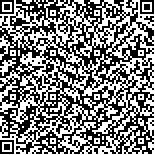| 摘要: |
| 采用传统分离手段对中国南海海域的细薄星芒海绵 (Stelletta tenui (Lindgren,1897))、皱皮软海绵 (Halichondria rugosa (Ridley&Dendy))、澳大利亚厚皮海绵 (Craniella australiensis (Carter))、贪婪倔海绵(Dysidea avara (Schmidt))4种海绵体内的微生物进 行了分离培养,随机挑选64株芽孢杆菌属细菌(每种海绵16株)进行了RAPD-PCR基因多态性分析。研究表明,一些海绵微生物是可以通过传统分离手段 得到的,来自同一或者不同海绵的微生物均具有丰富的基因多态性。 |
| 关键词: 海绵 芽孢杆菌 RAPD-PCR 聚类分析 |
| DOI: |
| 分类号: |
| 基金项目:国家863计划资助项目(2002AA628080,2004AA628060);上海市科技启明星资助项目(04QMX1411) |
|
| RAPD-PCR study on the genetic diversity of sponge-associated microorganisms |
|
|
| Abstract: |
| Sponge-associated microorganisms were isolated from 4 species of sponges Stelletta tenui (Lindgren, 1897), Halichondria rugosa (Ridley & Dendy), Craniella australiensis (Carter), Dysidea avara (Schmidt) in the South China Sea. After cultivation the genetic diversity of 64 strains of sponge-associated Bacillus (16 strains /sponge) was revealed based on RAPD-PCR fingerprinting and clustering analysis. It was proved that we can obtain sponge-associated microorganisms by traditional isolation method and there is genetic diversity among strains from the same or different sponges. |
| Key words: sponge Bacillus RAPD-PCR clustering analysis |
